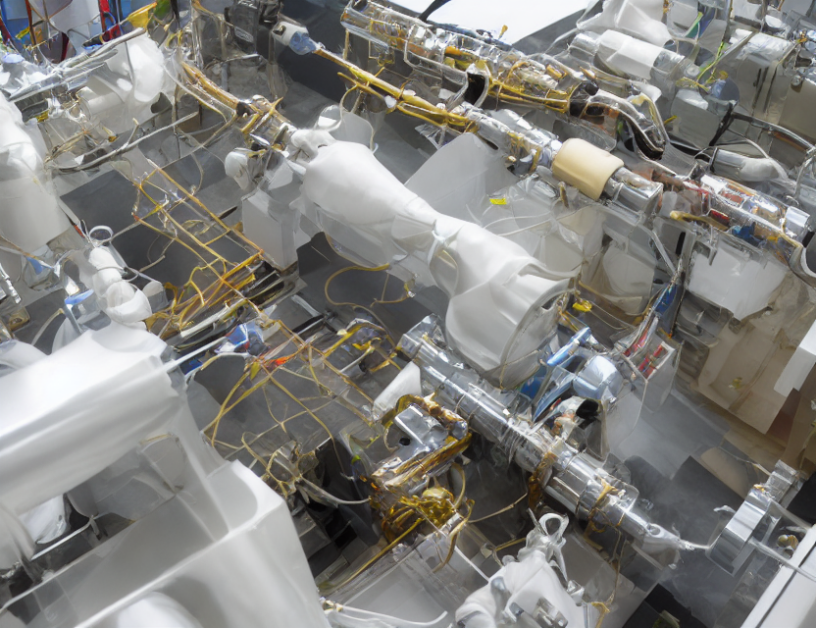In this article, researchers explore the phenomenon of excess heat generation during the desorption of hydrogen from a metal surface. They investigate the factors that affect this process and evaluate the potential implications for energy applications.
The study begins by introducing the concept of excess heat, which is defined as the amount of heat generated beyond what is expected based on the laws of thermodynamics. The authors explain that this phenomenon has been observed in various experimental systems, including hydrogen desorption from metal surfaces.
To better understand excess heat generation during desorption, the researchers turn to the thermal resistance network diagram. This visual representation helps them identify the key components involved in the process and their interactions. They explain that the thermal resistances between the heater and the sample, the sample and the holder, and the holder and the chamber wall play a crucial role in determining the amount of excess heat generated.
The authors then delve into the details of their experimental setup and methodology, which involves measuring the temperature of the heater, the mid-infrared thermometer (Md-IR), and the vacuum chamber pressure during desorption. They explain that these measurements allow them to determine the thermal efficiency of the system and identify any anomalies in the heat generation process.
Next, the researchers present their findings on the dependence of excess heat generation on temperature. They show that as the temperature of the heater increases, the amount of excess heat generated also increases, but at a slower rate. They explain that this behavior can be attributed to the fact that the thermal resistance between the heater and the sample decreases with increasing temperature, leading to increased heat transfer and, therefore, more excess heat generation.
The authors then explore the implications of their findings for energy applications. They suggest that the ability to generate excess heat during desorption could be leveraged to improve the efficiency of various energy-related processes, such as hydrogen production and nuclear reaction initiation. They also acknowledge the potential challenges associated with scaling up these processes for industrial use.
Finally, the researchers conclude by highlighting the significance of their findings in advancing our understanding of excess heat generation during desorption. They emphasize that this knowledge could lead to the development of more efficient energy technologies and contribute to a more sustainable future.
In summary, this article provides valuable insights into the phenomenon of excess heat generation during hydrogen desorption from metal surfaces. By leveraging their experimental setup and methodology, the researchers are able to identify the key factors that affect excess heat generation and evaluate its potential implications for energy applications. Their findings offer a promising avenue for improving energy efficiency and sustainability in various industrial processes.
Instrumentation and Detectors, Physics
Excess Heat in Cold Fusion: A Comprehensive Review of Experimental Procedures and Results



